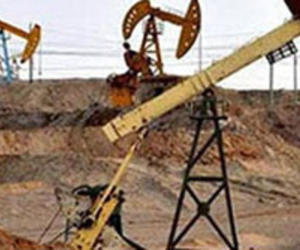Piñón on Energy: Cuba’s 2010 oil and gas analysis
- Submitted by: manso
- Business and Economy
- 08 / 24 / 2011

By Jorge R. Piñón. Crude and natural gas production. Cuba’s domestic heavy-sour crude oil production reflected an increase of approximately 11 percent, from 47,517 bd in 2009 to 52,623 bd in 2010. This new production was predominantly the result of new record-breaking 6,000 meter horizontal drilling coastal prospects around the town of Camarioca, east of the beach resort of Varadero in Matanzas province.
The gross working interest of Cuba’s national oil company CubaPetróleo (Cupet) in 2010 was 31,419 bd, while that of Canada’s Sherritt International Corp. was 21,204 bd. This represents 59.7 percent and 40.3 percent, respectively, of total domestic crude oil production.
Oil-in-place estimates for Cuba’s northern oil province range from 1,000- 2,000 mmbo, with recovery ratios of between 6 and 7 percent of oil in place, determined by the viscosity of the oil and the permeability of the rocks. Future production is expected to increase, thanks to planned enhanced secondary oil recovery projects between Cupet and Russia’s Zarubezhneft in the Boca de Jaruco field.
Cuba’s domestic crude-oil production peaked in 2003 at 64,018 bd. (Note: Cuba’s Oficina Nacional de Estadísticas reports national crude oil production in metric tons; a conversion factor of 6.35 barrels per metric ton was used for this analysis)
Associated natural gas production (97 percent recovery factor) seemed to be reaching a plateau of approximately 38bcf annually as a result of the maturity of the Varadero and Puerto Escondido oil fields. Cuba saw its associated natural gas production increase by more than 40 percent, from approximately 26bcf in 2005 as a result of its Energas joint venture with Canada’s Sherritt.
Petroleum demand
Cuba’s petroleum demand levels have been declining over the past five years, primarily as a result of conservation efforts and increases in fuel and electricity prices reflecting international market conditions. Petroleum demand of 137,025 bd in 2010 reflected a decrease of approximately 2 percent from 2009 demand level of 139,651 bd.
High-sulphur residual fuel oil/crude oil blend consumption of 89,868 bd — used as boiler fuel for the electric power sector, steel, mining and cement industries — represented over 65 percent of total demand.
The second-largest petroleum demand product was diesel at 26,453 bd, intended for the commercial land transport and rail sectors. Motor gasoline consumption of 6,184 bd represents the lack of a private sector vehicle fleet, particularly when you compare it on a per capita basis with the region’s largest mogas consumers of Puerto Rico at about 55 mbd and the Dominican Republic with demand levels of around 23 mbd according to EIA figures.
Refinery production
The Havana and Santiago de Cuba refineries continue to run intermittently, each averaging about 22,000 bd, from boiler plate capacities of 100,000 bd each.
The 65,000 bd revamped Russian-built Cienfuegos refinery, today a Cupet (51%) PdVSA (49%) joint venture, ran 55,295 bd in 2010 compared with 57,316 bd in 2009. This refinery is basically a hydroskimming configuration with a reformer but with two (naphta and distillate) hydrotreating units, which as of this date have not been revamped and are not operating. As a result, diesel and mogas qualities do not meet regional specifications.
Petroleum imports and exports
Cuba imported a total of 113,000 bd of refined products and crude oil from Venezuela in 2010, compared to 112,000 bd in 2009, according to PdVSA’s 2010 financial reports.
Imports of Venezuelan refined products — avgas, LPG, lubricant base stock, diesel, and fuel oil — rose to about 14,000 bd in 2010 from about 9,000 bd in 2009. Imports of Venezuelan Mesa 30 crude oil amounted to 99,000 bd in 2010, down from 103,000 bd in 2009.
The majority of Cuba’s Venezuelan petroleum import volumes — 93,000 bd — are part of the Convenio Integral de Cooperación Económica, a barter agreement of petroleum for goods and services with subsidized payment terms signed by both countries in October of 2000. Approximately 20,000 bd of total Venezuela crude oil imports represent PdVSA-Caribe equity tolling volume, which is exported to regional and West African markets via tenders to international oil trading companies.
Source: Oficina Nacional de Estadísticas de Cuba 2010 Energy Report, published June 23, 2011.
Jorge R. Piñón was president of Amoco Corporate Development Company Latin America from 1991 to 1994; in this role he was responsible for managing the business relationship between Amoco Corp. and regional state oil companies, energy ministries and energy regulatory agencies.
Source: www.cubastandard.com/2011/08/22/pinon-on-energy-cubas-2010-oil-and-gas-a...
Comments